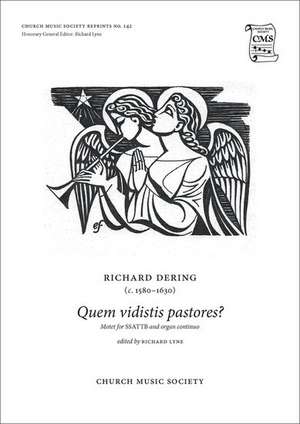Quem vidistis pastores?: Church Music Society
Compozitor Richard Dering Editat de Richard Lyneen Limba Engleză Sheet music – 27 dec 2018
Din seria Church Music Society
-
 Preț: 28.36 lei
Preț: 28.36 lei -
 Preț: 28.36 lei
Preț: 28.36 lei -
 Preț: 32.48 lei
Preț: 32.48 lei -
 Preț: 31.61 lei
Preț: 31.61 lei -
 Preț: 32.48 lei
Preț: 32.48 lei -
 Preț: 35.14 lei
Preț: 35.14 lei -
 Preț: 32.48 lei
Preț: 32.48 lei -
 Preț: 32.48 lei
Preț: 32.48 lei -
 Preț: 32.48 lei
Preț: 32.48 lei -
 Preț: 32.48 lei
Preț: 32.48 lei -
 Preț: 35.14 lei
Preț: 35.14 lei -
 Preț: 35.14 lei
Preț: 35.14 lei -
 Preț: 32.48 lei
Preț: 32.48 lei -
 Preț: 36.13 lei
Preț: 36.13 lei -
 Preț: 32.48 lei
Preț: 32.48 lei -
 Preț: 32.48 lei
Preț: 32.48 lei -
 Preț: 36.13 lei
Preț: 36.13 lei -
 Preț: 46.46 lei
Preț: 46.46 lei -
 Preț: 28.36 lei
Preț: 28.36 lei -
 Preț: 26.18 lei
Preț: 26.18 lei -
 Preț: 26.06 lei
Preț: 26.06 lei -
 Preț: 32.48 lei
Preț: 32.48 lei -
 Preț: 36.13 lei
Preț: 36.13 lei -
 Preț: 22.67 lei
Preț: 22.67 lei
Preț: 32.48 lei
Nou
Puncte Express: 49
Preț estimativ în valută:
6.22€ • 6.75$ • 5.22£
6.22€ • 6.75$ • 5.22£
Disponibil
Livrare economică 22-28 martie
Preluare comenzi: 021 569.72.76
Specificații
ISBN-13: 9780193954175
ISBN-10: 0193954176
Pagini: 12
Dimensiuni: 210 x 231 x 1 mm
Greutate: 0.04 kg
Ediția:Vocal score
Editura: OUP OXFORD
Colecția OUP Oxford
Seria Church Music Society
Locul publicării:OXFORD, United Kingdom
ISBN-10: 0193954176
Pagini: 12
Dimensiuni: 210 x 231 x 1 mm
Greutate: 0.04 kg
Ediția:Vocal score
Editura: OUP OXFORD
Colecția OUP Oxford
Seria Church Music Society
Locul publicării:OXFORD, United Kingdom
Recenzii
Treble voices are frequently posed against the bass voices, creating an almost antiphonal effect of two three-voice choirs. These playful interactions set up moments of six-voice harmony with brilliance. The concluding alleluia section, occupying a full third of the piece, dances with the joy of the Nativity. The music is of only moderate difficulty and would work well for choirs of all sizes. Typical of Church Music Society publications, the emphasis is on a practical performing edition, yet helpful critical commentary by editor Richard Lyne appears at the back.
Notă biografică
Richard Dering (c.1580-1630) was an English Roman Catholic composer active in the early seventeenth century. Dering spent many years abroad, and it is now assumed that he converted to Catholicism during a stay in Italy, after having trained as a musician in England where he obtained a B.Mus. from Christ Church, Oxford, in 1610. Dering spent time in Brussels as organist to a convent for English nuns, and was later awarded royal appointments as organist to Queen Henrietta Maria and as 'musician for the lutes and voices' to King Charles I. Dering thus became highly proficient in the contemporary styles of both England and Italy: his English music, which includes Anglican repertoire, was all published posthumously; his Italianate music includes Latin sacred works for the Catholic church, and secular Italian madrigals.
